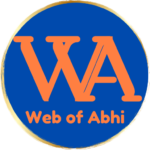How to Rank Your Business Series – Day 09
Content lies at the heart of every successful SEO strategy. High-quality, relevant content not only attracts and engages users but also signals to search engines that your website is authoritative and trustworthy. In this expert guide, we’ll explore essential content creation tips for SEO success, covering everything from keyword research and content planning to writing techniques and optimization strategies. Building on our previous discussions on On-Page SEO, Off-Page SEO, and mobile optimization, we’ll demonstrate how effective content creation contributes to improved search engine rankings and user satisfaction.
Let’s Understand Tips for SEO Success
Understanding the Role of Content in SEO
Significance of Content in SEO
Content is the backbone of SEO, playing a crucial role in attracting organic traffic, establishing expertise, and earning backlinks. High-quality, relevant content answers users’ queries and provides value, which helps search engines understand the site’s purpose and relevance. For example, a blog post on “Top Web Development Trends in 2024” can attract visitors looking for the latest industry insights, showcasing expertise and authority in web development
Content Relevance and Search Engine Evaluation
Search engines evaluate content based on its relevance and quality, using user engagement signals like click-through rates, time on page, and bounce rates. Content must be well-structured, informative, and engaging to rank well. For instance, a detailed guide on “How to Optimize Your Website for Mobile Users” not only matches user intent but also keeps them engaged, signaling to search engines that the content is valuable and relevant. This improves the site’s ranking and attracts more organic traffic.
Keyword Research and Content Planning
Conducting Keyword Research
Explore keyword research tools such as SEMrush, Ahrefs, and Google Keyword Planner to identify relevant keywords with high search volume and low competition.
Content Gap Analysis
Perform content gap analysis to identify opportunities for creating content that addresses user intent and fills informational gaps in your niche.
Developing a Content Calendar
Create a content calendar outlining topics, keywords, and publication dates to maintain consistency and alignment with SEO objectives.
Writing Techniques for SEO-Friendly Content
Crafting Compelling Headlines
Write attention-grabbing headlines that incorporate target keywords and entice users to click through from search engine results pages (SERPs).

Creating Engaging Introductions
Hook readers with engaging introductions that establish relevance, address pain points, or promise valuable insights.
Structuring Content for Readability
Use short paragraphs, bullet points, and subheadings to improve readability and facilitate scanning for key information.
Incorporating Multimedia Elements
Enhance content engagement with multimedia elements such as images, videos, infographics, and interactive widgets.
Optimizing Content for SEO
On-Page Optimization
Optimize title tags, meta descriptions, headings, and body content with target keywords while maintaining natural language and readability.
Internal Linking
Incorporate internal links to relevant pages within your website to improve navigation, distribute link equity, and reinforce topical relevance.
Outbound Links
Include outbound links to authoritative sources to provide additional context and credibility to your content.
Schema Markup
Implement schema markup to enhance the visibility and appearance of your content in search engine results, particularly for rich snippets and featured snippets.

Content Promotion and Distribution
Social Media Promotion
Share your content across social media channels to increase visibility, drive traffic, and encourage social sharing and engagement
Email Marketing
Leverage your email list to promote new content releases, updates, and resources to subscribers and nurture relationships with your audience.
Influencer Outreach
Collaborate with influencers and industry experts to amplify your content reach and earn backlinks and social endorsements.
Monitoring and Iteration
Performance Tracking
Monitor key performance indicators (KPIs) such as traffic, engagement metrics, and conversions to measure the effectiveness of your content.
User Feedback
Solicit feedback from users through surveys, comments, and social media interactions to identify areas for improvement and content iteration.
Conclusion
Effective content creation is fundamental to SEO success, driving organic traffic, engagement, and conversions. By implementing the content creation tips outlined in this expert guide and optimizing your content for search engines and users alike, you can enhance your website’s visibility, authority, and relevance in the competitive digital landscape.
Stay tuned for more insights on ranking your business in the digital landscape.
AR
Owner of Web of Abhi – Online Business Solution CompanyWeb Developer | WordPress | SEO | Digital Marketing | Graphic Designer | Web Design



